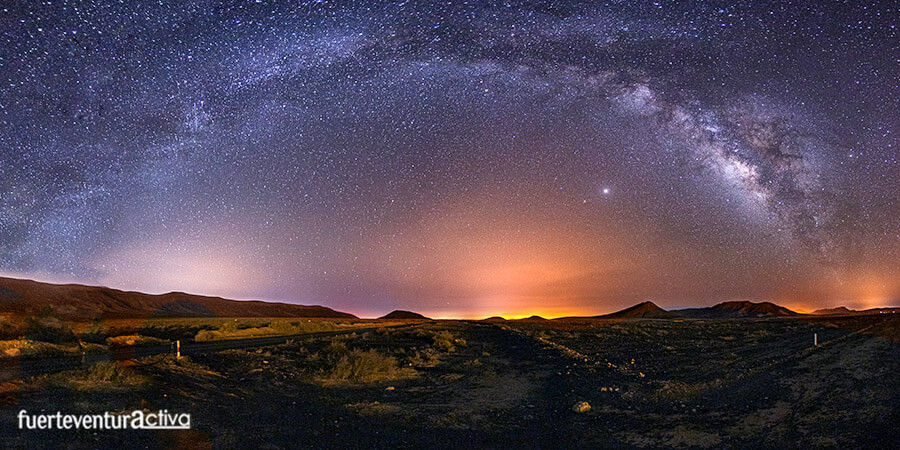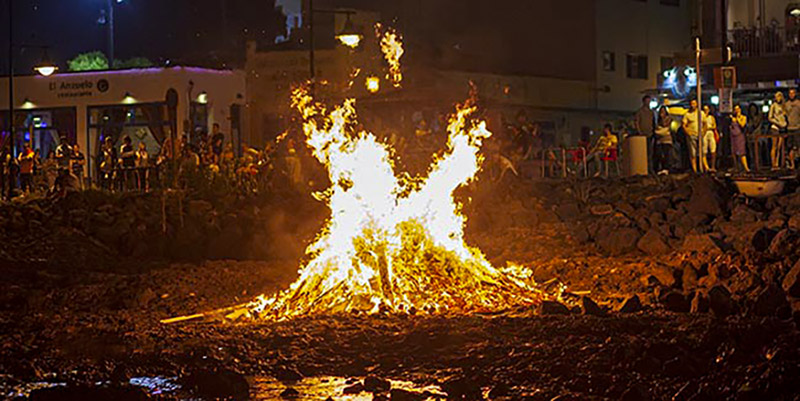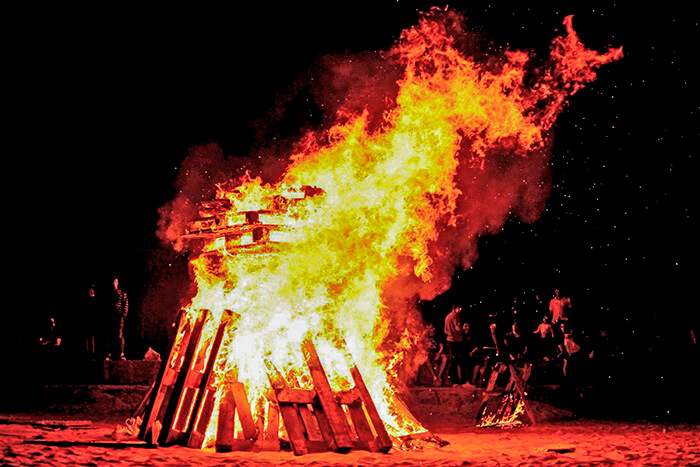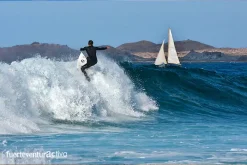FUERTEVENTURA WITH CHILDREN, LIFE IN FUERTEVENTURA, What to see in Fuerteventura ?
The bonfires of San Juan in Fuerteventura
The night from June 23 to 24 is one of the most magical of the year. Wishes are made, people sing, they dance, but above all, bonfires are lit and their fire is projected into the darkness, giving it an almost ghostly appearance.
This festivity has thousands of years of history, an issue that is not surprising since the summer solstice occurs on those days. Every culture on the planet celebrates the arrival of summer. Yes, each in its own way.
The origin of bonfires on the days around the summer solstice dates back, at least, to the Celtic culture. The Celts worshiped the sun, they celebrated the arrival of summer and the productivity of the crops. On those days bonfires were lit, and the druids made the cattle pass through the flames, to purify them and defend them against diseases. The bonfire also served to help the sun “not lose strength”, since from San Juan the days will be shorter and shorter.

The Celts had the firm conviction that the fire of the summer solstice had a regenerative, protective and prophylactic nature. It preserved and cured illnesses, warded off curses and all kinds of mishaps and storms.
This pagan festival was introduced in southern Europe by the Lombards, originally from Scandinavia, and the four barbarian peoples (Vandals, Swabians, Alans and Visigoths) who settled in the Iberian Peninsula.
The festival was adopted by the different cultures that coexisted in the Iberian Peninsula, maintaining the custom of lighting bonfires during that night. Christians, Jews and Muslims celebrated the summer solstice together and in a very similar way.
The Canarian aborigines also celebrated the summer solstice.

In the 16th century, historical documents say that the aborigines of Lanzarote and Fuerteventura built bonfires and that various sacrifices and rituals were made around the fire in order to invoke the spirits of their ancestors. They were said to appear in the form of little clouds. It is what the majos called “bayuyos” or “enchanted”.
This practice of “conversing” with loved ones who are no longer with us continued to be active after the Castilian conquest. In fact, until recently, on the two islands mentioned, people cleaned their houses more diligently on San Juan’s day, and put cutlery on the table for deceased relatives. The next morning many claimed that they had felt the presence of their loved ones.
In Fuerteventura it was traditional, during the magical day, the “ajijides”, which are collective cries of joy that were accompanied by one of the most ancient music on the island: the one produced by hitting pebbles and limpet shells.
In other islands, during San Juan, the abundance of crops and rain was predicted. It was also said that the mythical island of San Borondón appeared on the horizon that day.

The night of San Juan and the water.
The San Juan festivities are also related to the sea. The ancients had established a relationship between the tides and the solstices, thinking that the flows of the sea acted in accordance with it. The bathing season began on the day of San Juan and it was believed that if they bathed before that day, they would feel bad. The goatherds took their flocks to the sea during the morning of San Juan with a preventive purpose. It is believed that this last tradition was carried out by the Guanches before the Castilian conquest.
But the therapeutic virtues of San Juan water were not only manifested in the sea, but also in the stills, the jars, and the morning dew. Also in the fountains and water springs that were enramaban for that day.
Since ancient times, in the Canary Islands, different rituals related to water have been carried out during the day of San Juan. We tell you some:
It was believed that whoever washed his face on San Juan’s day, before dawn, his beauty would increase and last for the whole year.
Saint John’s Day was also used to find a partner. The person who had several suitors, especially women, wrote the names of the boys they liked on paper, and placed them in a container of water. At dawn he would go to see the papers and the one that was most open would be the name of the future husband.
A long time ago our ancestors predicted the rains of the year on the day of San Juan in the following way. The names of the months were written on two pieces of paper. They were placed separately with a handful of salt on top of each one and left in the serene during the night of Midsummer’s Eve. At dawn the humidity of each paper was checked, the wettest papers would indicate the rainiest months.

We could continue telling you for hours about the curious traditions of the night of San Juan in the Canary Islands, but we want you to enjoy the magic of fire and the sea. In Fuerteventura it is possible to do it in practically the whole island. Now, there are many towns that, in addition to lighting bonfires, celebrate their patron saint festivities in honor of Saint John the Baptist these days. We highlight the town of El Matorral and the Pozos neighborhood in the municipality of Puerto del Rosario, Cofete and Ajuy in the municipality of Pájara, Vallebrón in the northern municipality of La Oliva, and Pozo Negro in Antigua.
Fuerteventura6





